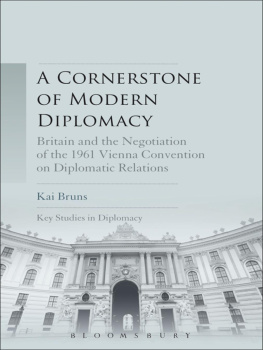1. Revisiting the Essence of Treaty Interpretation
1.1 Legal Interpretation in General
1.1.1 Legal Interpretation as Opposed to Other Daily Interpretations
Interpretation of a writing is basically a hermeneutical task for the explanation, elucidation or understanding of the meanings in the writing. The term interpretation can be used in a very broad way. In our social life, we always have to give meanings to the communicated words which we receive from our counterparts so as to properly understand the socially perceivable messages. In linguistics, interpretation is about the analysis of languages in their forms and meanings. For religions, scriptures also need interpretation, but different views exist as to whether Bible scriptures should be interpreted literally. In domestic and international politics, readers of a political document or statement sometimes have to read out the hidden messages from it. When interpreting a poem, its readers sometimes have to adopt an imaginative interpretation so as to appreciate the beauty of the expression.
When it comes to the interpretation of a term in any legal document, either in a treaty, a constitution, a legislation or a contract, it is not merely a language or linguistic issue, although legal interpretation almost always starts from the textual language of the interpreted document. Also although a legal interpretation is not to specifically identify the socially perceivable message, it still needs to find the meaning which is ordinary in its usage. A legal document is not supposed to have a hidden message, but an interpreter cannot exclude the possibility that a meaning is not literally reflected from the surface of the interpreted term and hence a basic approach of considering the object-and-purpose of the legal document and the context of the interpreted term must be taken. Although a legal interpretation cannot be based on the interpreters imagination, he/she still has to take into account a wider range of perspectives and to conduct an overall assessment and should not exclusively stick to the rigid wording in the interpreted document in isolation from the contextual reference. Hence, a legal interpretation is not like the interpretations which people encounter in their daily life. But there are still similarities in their essences.
If a legal interpretation is basically not like other daily interpretations, then what is the essence of legal interpretation? There are a number of necessary features/elements for an interpretation to be considered as legal interpretation. These features include that an interpretation is usually conducted within or under certain legal proceedings (which usually are judicial or quasi-judicial proceedings); that it is usually conducted by the an adjudicator, who usually is a judge, an arbitrator, or other kinds of judicial or quasi-judicial body; that the interpreted subject is a provision or a term in a legal document; that the functions and purposes of interpretation are to clarify the unclear and vague terms so to give a proper meaning to a legal provision to be applied to a dispute or in a legal proceeding, or to remove the incompleteness in the legal documents, especially the incompleteness in a law or a treaty; and that there must be certain pre-established rules provided in law or treaty or developed by jurisprudence to be based upon for conducting legal interpretation.
Among these, the key feature in a legal interpretation which is so vastly different from other interpretations in our daily life is that legal interpretation conducted by the interpreter must be based on certain pre-established rules. For the interpretation of treaties, such pre-established rules are the set of customary rules of treaty interpretation, which are far too abridged and need additional elements to be included to make the rules more comprehensive and operable.
1.1.2 Treaty Interpretation Being a Process, a Method and a Mechanism
Legal interpretations basically include treaty interpretation, constitutional interpretation, statutory interpretation and contractual interpretation . There will be some comparisons among these legal interpretations in the next chapter of this book so as to get better ideas of them.
For treaty interpretation, briefly speaking, it is a very important component of judicial or quasi-judicial process (hence treaty interpretation is in essence a process) to clarify and determine the rights and obligations between relevant parties under a treaty through giving a proper meaning to its term or provision (hence treaty interpretation is a part of a dispute settlement mechanism) based on some interpretation rules (hence it is a method).
Specifically, treaty interpretation includes the features that the relevant legal process is usually conducted in an international legal proceeding (such as an international judicial or quasi-judicial dispute settlement proceeding) So the key difference of treaty interpretation from other legal interpretations is that the rules of interpretation are those provided in the VCLT and those developed by international jurisprudence.
As shown in the title of this book, the main purpose of this writing is to argue the desirability of further codifying certain treaty interpretation rules. But a discussion on the need of possible codification of certain new rules for treaty interpretation would require a comprehensive understanding of the nature and features of treaty interpretation. Hence, in the next part of this chapter, discussions will be focused on these features of treaty interpretation.
1.1.3 Treaty Interpretation Being an Important Component of Treaty Operation
International legal instruments can be negotiated and drafted in a binding and non-binding manner. VCLT Article 2.1(a) defines treaty as an international agreement concluded between States in written form and governed by international law, whether embodied in a single instrument or in two or more related instruments and whatever its particular designation. In other words, it is not part of the requirements for the purpose of being considered as a treaty under the VCLT concerning whether a written international instrument between States is binding or not. But the practice has been that basically only those international instruments which impose at least some binding obligations on the parties are concluded as treaties and treated as such. A purely non-binding international instrument is basically not considered as a treaty or is usually not concluded or adopted in the form of a treaty.
However, it must be borne in mind that within a treaty, there could still be many non-binding rules in addition to the binding provisions. For instance, in the WHO Framework Convention on Tobacco Control (FCTC) , there are many mandatory provisions imposing legal obligations on its Parties. Article 5 of the FCTC is an example. It states: Each Party shall develop, implement, periodically update and review comprehensive multisectoral national tobacco control strategies, plans and programmes in accordance with this Convention and the protocols to which it is a Party. The FCTC also has many non-binding provisions. An example is in Article 16.7, which provides: Each Party should, as appropriate, adopt and implement effective legislative, executive, administrative or other measures to prohibit the sales of tobacco products by persons under the age set by domestic law, national law or eighteen.






